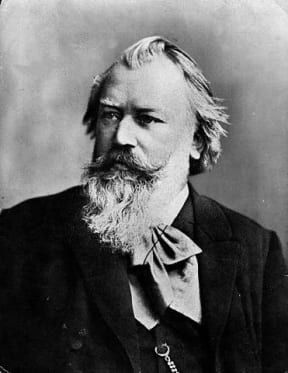Brahms’s Fourth Symphony was arguably one of his most academic works. He described it as “a batch of polkas and waltzes”, which was undoubtedly intended to be ironic.

Johannes Brahms Photo: Public Domain, C. Brasch
This analogy refers to his tendency to jokingly refer to his most serious works in the language of light music. His Fourth Symphony and Academic Festival Overture include apparent juxtapositions between popular and folk elements on one hand, and serious or academic styles on the other. He said the trick was to balance the intellectual rigor of serious music with a folk-like beauty that would appeal to the listener.
His folk-like elements are not just in his songs, but also his orchestral works. They helped create melodies that seem eminently singable. He said his best melodies came to him naturally when he was wiping his boots after a morning walk. He added that he then had to work hard to make real music out of these natural gifts.
The Fourth Symphony reveals not just additional layers of complexity, but some popular or folk elements as well. Some German folksongs incorporated into his Fourth Symphony include “Wir hatten gebauet ein staatliches Haus”, “Alles schweige’, and more.
Creating a divide between popular and art music, Brahms’s folk-song technique not only speaks to people, but transcends the delights of purely popular idioms.

